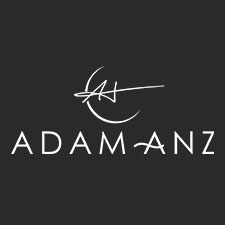The shoulder joint offers the largest range of motion in the human body. Made up of three bones: the humerus (arm bone), the scapula (shoulder blade), and the clavicle (collar bone), it is often susceptible to injury because of this great scope of mobility. The shoulder joint is a ball and socket type joint, allowing individuals to perform activities over their head, in front and in back of their body, and using the full rotation that is needed for sports that involve throwing, serving, or overhead function.
The shoulder relies heavily on many soft tissue structures to provide stability: including the muscles surrounding as well as ligaments and the glenoid labrum. With a shoulder dislocation these structures can become injured which may affect subsequent shoulder stability. With a shoulder dislocation, the ball and socket (the humeral head and glenoid) become separated and are not in contact, with the humeral head moving forwards, backwards or downward.
Dislocated shoulders are a common injury among athletes. Individuals who compete in contact and tackling sports such as football, hockey, and rugby are at a higher risk of a dislocation event than non-contact sports. Outside of sports, a traumatic event such as a hard fall can also create this injury. When a young active adult suffers from a dislocation caused by trauma, the risk of a repeat dislocation or future shoulder instability is high.
Symptoms
Symptoms of a shoulder dislocation will vary depending on the severity of the dislocation. Most patients will here a popping sound or sensation, followed by immediate pain. A loss of range of motion will also occur.
Diagnosis
Most individuals who suffer from a shoulder dislocation often have the injury reduced in an Emergency Room, requiring a physician or trainer to maneuver the joint back into place. While this offers a quick fix for the dislocation itself, a thorough physical examination, followed by an X-ray is necessary to evaluate the injury. A MRI should may follow to assess the ligaments and labrum of the shoulder to see if they may have been damaged. Dr. Anz will assess the injury and discuss treatment options and expectations.
Treatment
Treatment for a shoulder dislocation will depend on the severity of the injury. Dr. Anz will take into account the activity level of the patient, including age, number of previous dislocations, and future goals when determining the proper treatment course. If non-surgical treatment is thought to be the best solution, Dr. Anz will recommend ice, rest, immobilization in a sling and physical therapy to help strengthen the nearby structures of the shoulder joint.
Surgical Treatment
Depending on the extent of injury and the number of times of instability, Dr. Anz may recommend surgery. Recurrent dislocations may cause further injury which may increase the chance of further shoulder instability. Arthroscopic surgery can be used to repair the glenoid labrum in episodes of shoulder instability. In some instances, open surgery may be necessary to repair structures and restore stability.
Post-Operative
Following surgery, Dr. Anz will prescribe a thorough rehabilitation program design to restore full function of the shoulder joint. It’s important for patients to understand that for a full recovery, rehab is necessary so that range of motion, strength, and overall mobility can be achieved over time. Most patients are able to resume normal activities within 4-6 months following surgery.
Dr. Anz is an orthopedic shoulder surgeon and sports medicine specialist in the Gulf Breeze/Pensacola, Florida area. If you have sustained a shoulder dislocation, have recurrent shoulder instability, or are seeking additional resources to treat your shoulder pain, please contact our office to schedule a consultation.
